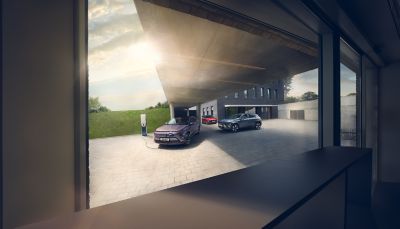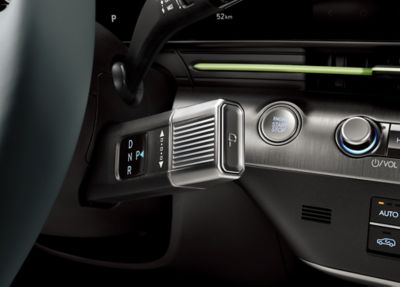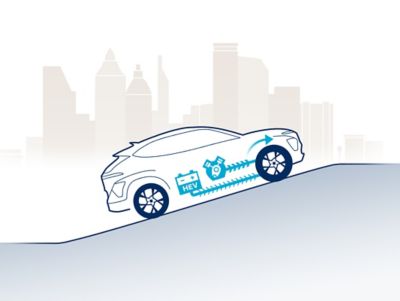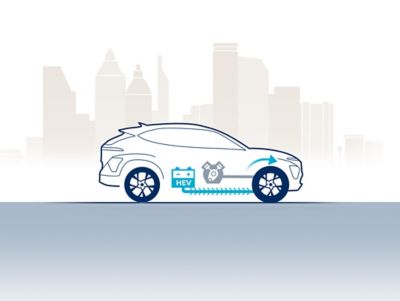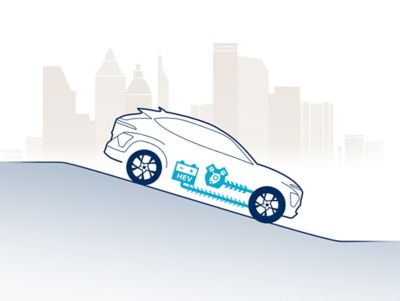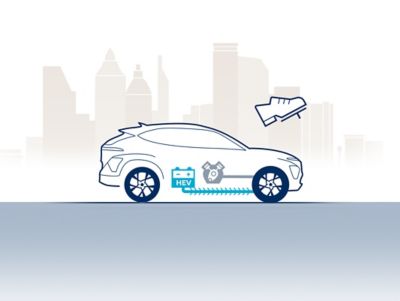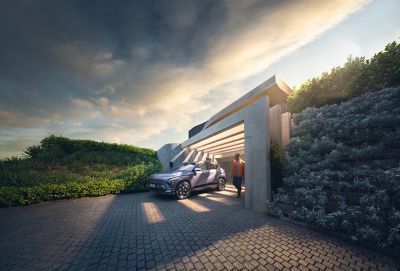One of the widest range of powertrains.
Developed to reduce tailpipe emissions without compromising on being fun to drive, the KONA offers one of the widest range of powertrains in the segment. Here you can choose from a petrol engine, a full hybrid, and a full electric.
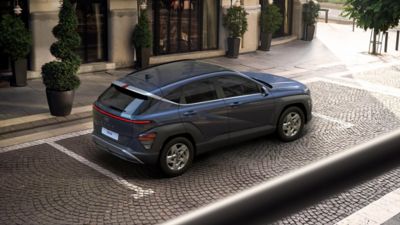
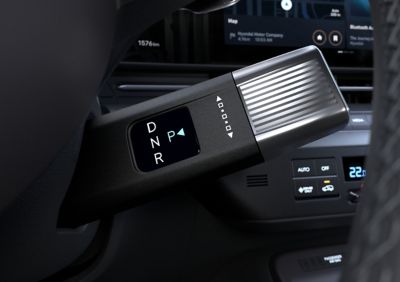
Petrol
The KONA.
Featuring a more dynamic road presence, a futuristic new look, and a larger living space for all your adventures, this bold, upscaled SUV is still very much at home on city streets and country roads.

Hybrid
Electrifying efficiency: the KONA Hybrid.
The KONA Hybrid uses electric power to help you go further. All without you having to charge a battery or change your driving habits. Taking world-class fuel efficiency to the next level, it is equipped with both a petrol engine and a battery-powered electric motor: a full-parallel hybrid drive system. Regenerative braking charges the battery, so you don’t have to.

Energy flow – how the KONA Hybrid works.
Depending on the driving situation, the KONA Hybrid switches seamlessly between its petrol engine and electric motor, sometimes using both. The regenerative braking system charges the battery by using the electric motor to slow the car. The energy stored in the battery then powers the electric motor to help in acceleration, uphill driving and low speed driving. This complex energy flow is illustrated in these animations.
Find out more about the KONA Electric.
The KONA Electric features pixel graphic details on the intake grille and rear bumper, a pixel-inspired alloy wheel design, aerodynamic side sill, black embracing line and optional black side mirrors and roof.
